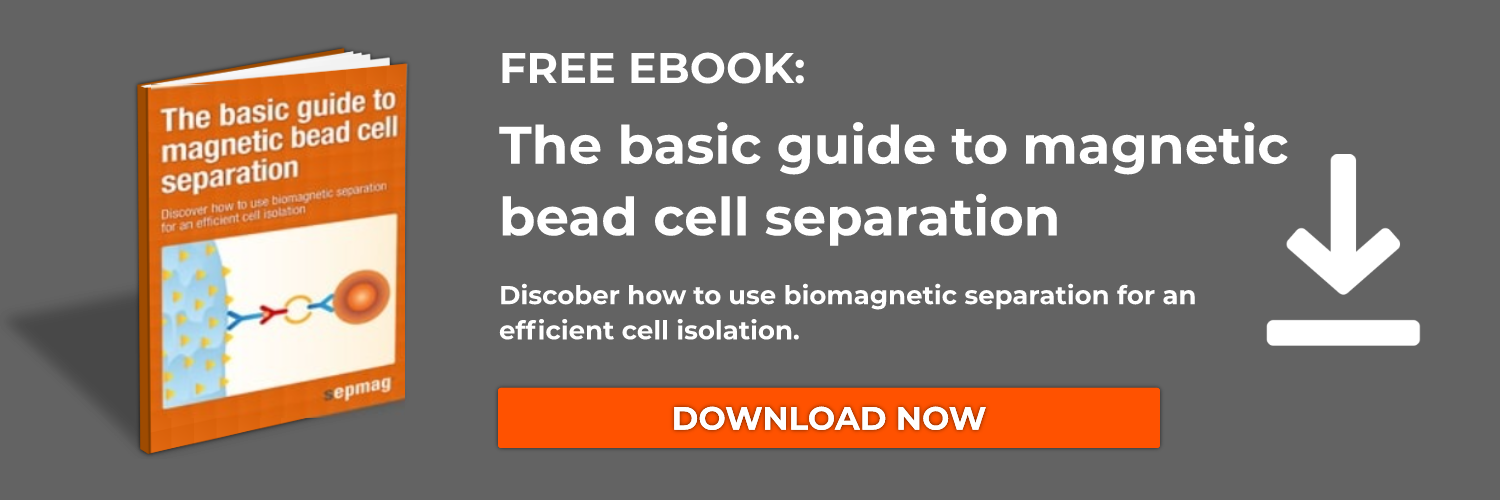Although magnetic particles have proven exceedingly useful in nanotherapy protocols, applications making use of external magnets have been limited to surface or shallow targets. The ability to use external magnets to focus on deeper targets has remained a challenge. To this end, a collaboration between researchers from the University of Maryland and Weinberg Medical Physics LLC has devised a way to use pulsed magnetic fields to direct particles to hard-to-reach targets.
Core/shell nanoparticles offer an additional degree of flexibility to nanoparticle-based applications. Comprised of an inorganic core and one or more shell layers, such particles enable a wider range of physical properties than would be possible for each of the component materials taken separately. In the case of bi-magnetic core/shell nanoparticles, the constituent materials exhibit distinct magnetic properties, yielding an extra layer of customization to the particle, based on the exchange interaction between the components.
Magnetic nanoparticles have proven particularly effective in chemotherapeutics applications. By combining the physical and chemical properties of more than one component material, nanoparticles can be designed that contain multiple functionalities, thereby dramatically increasing therapeutic efficacy. Recently, a research group out of University College Dublin in Ireland developed nanoparticles with distinct outer segments. The researchers coupled the properties of each of the segments to yield particles capable of performing diagnostic and therapeutic operations, inducing targeted cell death through multiple mechanisms.
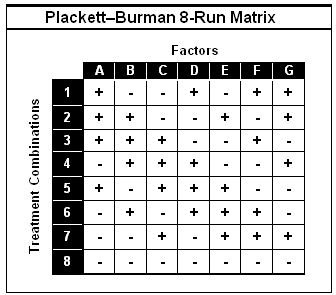
Nitrite and nitrate pollutants in soil and water pose significant health risks. The presence of these pollutants in drinking water can have serious consequences, including cancer, methemoglobinemia, and blue baby syndrome in newborns. Removal of these contaminants is essential to the maintenance of environmental and human health. Developing efficient strategies for removal, however, has proved challenging.
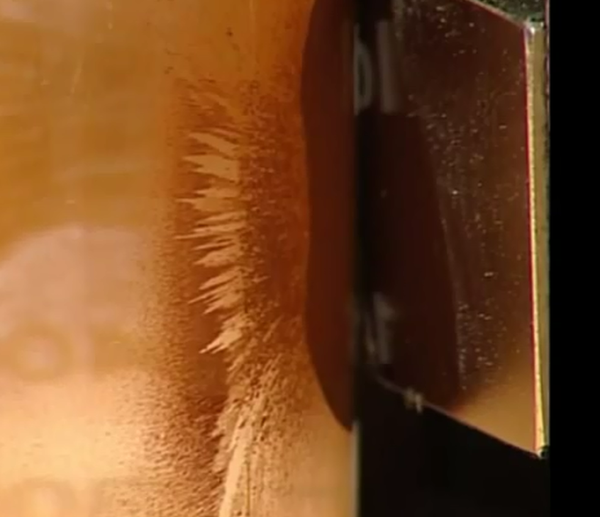
An article by Sepmag founder and CSO, Dr. Lluis M. Martinez, appears online this week in Genetic Engineering & Biotechnology News. The article addresses issues thatariseduring a biomagnetic separation application and offers critical suggestions for approaching a process. Of particular importance is an understanding of the inherent parameters of a separation.
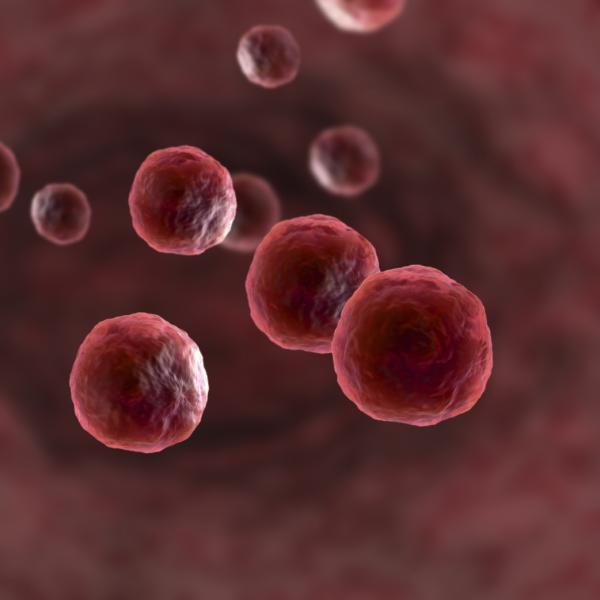
Mechanical stimulation is an important aspect of bone metabolism and regeneration. A number of studies have highlighted the importance of mechanotransduction pathways in osteogenic mesenchymal stem cell (MSC) differentiation.Providing a mechanical stimulus can have a significant role in the outcome of regenerative treatments.
Applying a mechanical load to damaged bone, however, is not always feasible. A recent study published in “Stem Cells Translational Medicine”describes a novel procedure forsuch cases. The protocol makes use of superparamagnetic nanoparticles to remotely induce mechanotransduction.
Using magnetic nanoparticles to activate mechanotransduction pathways
By targeting magnetic nanoparticles to cell-surface mechanosensors, researchers sought to deliver a stimulus to directly activate mechanotransduction pathways. Magnetic nanoparticles were labeled with either Arg-Gly-Asp (RGD) tripeptide or TREK1-Ab, targeting particles to mechanically gated receptors, i.e., integrin RGD-binding domains and TREK1 stretch-activated ion channels, respectively.
An oscillating magnetic field was applied, yielding a force of 4 pN per nanoparticle. Bound nanoparticles transferred the force generated by the external magnetic field to the stem cells via the receptors or ion channels to which they were attached, thus inducing mechanotransduction pathways. The result was propagation of the stimulus without the associated application of mechanical stress.
Stimulating bone growth
Researchers demonstratedthe principles oftheir technique in vitro utilizing chicken fetal femurs and collagen hydrogels. MSCs labeled with magnetic nanoparticles were delivered to the femur by microinjection. MSCs receiving mechanical stimuli via bound nanoparticles showed increased bone formation in comparison withunlabeled MSCs. Similarly, collagen hydrogels seeded with nanoparticle-labeled cells displayed increases in both volume and density, and significantly more mineralization than hydrogels seeded with unlabeled cells.
Combining mechanotransduction with the sustained release of bone morphogenetic protein 2 (BMP2) delivered by bioresorbable polymer microparticles resulted in an even greater increase in bone formation than that observed with either nanoparticle-mediated mechanotransduction or BMP2 alone. The microparticles, measuring 10–40 μm in diameter, were engineered to release BMP2 in controlled bursts over a number of days.The resulting synergistic effect underlines the potential for the procedure when combined with existing pharmacological therapies and other strategies for bone regeneration.
Researchers point out the range of possible MSC targets, both intra and extracellular, and thepotential for controlling the applied stimulus by altering the magnetic field strength or the number and size of the magnetic particles. Future avenues of study will include investigating the result of stimulating additional mechanoreceptors, either alone or in combination with the sustained release of growth factors.
A full report of the study can be accessed online in the Stem Cells Translational Medicine site.
Related news:

MEDICA is here! Unfortunately, we will not be able to attend this year as our senior technical-sales team is engaged with large projects overseas this quarter (Bryan in North America and Lluis in Japan). But don’t worry!If you want to see SEPMAG, our advanced biomagnetic systems will be available at different stands, displayed by manufacturers who will be utilizing it to demonstrate the performance of their magnetic beads.
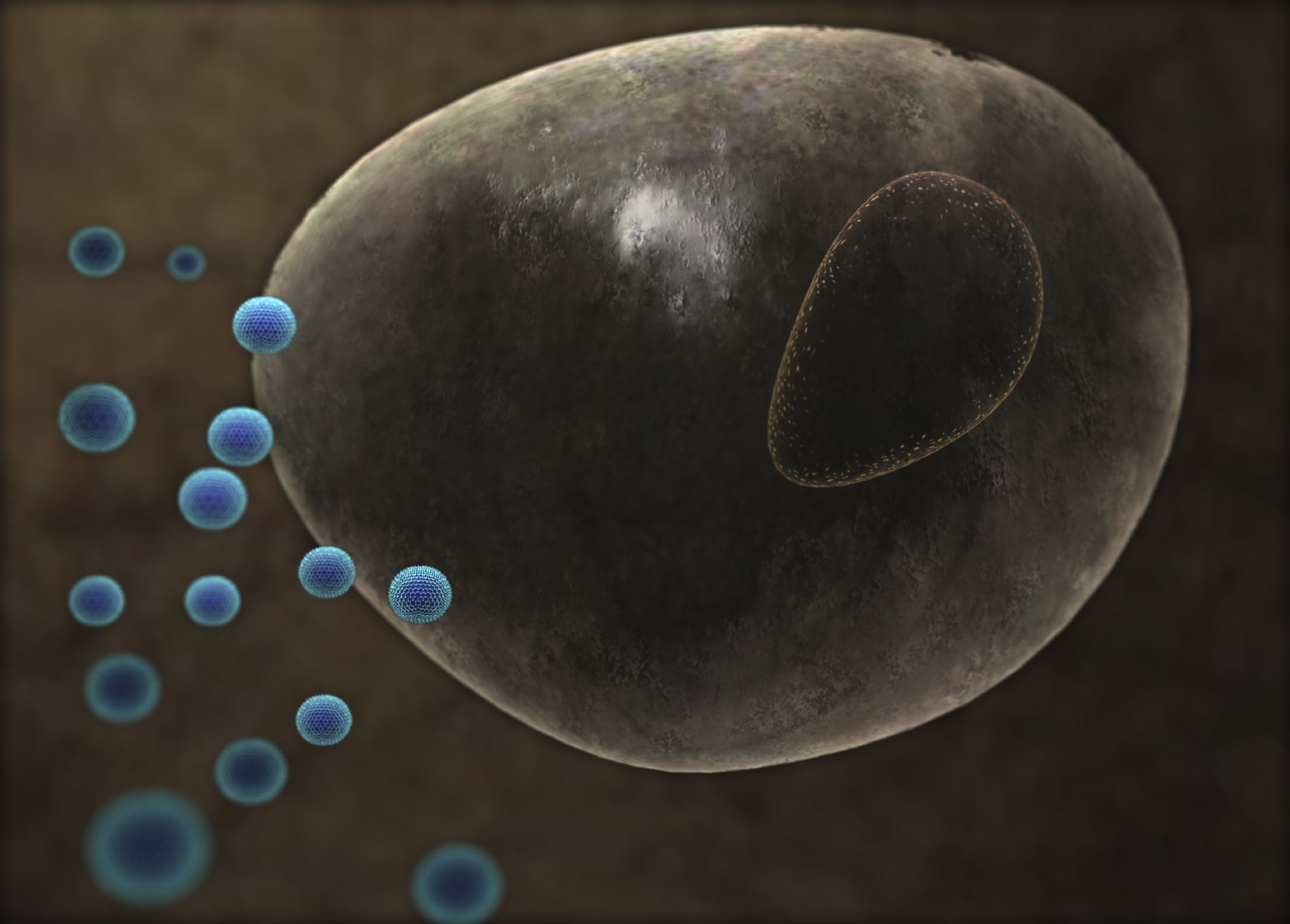
A recent study published in “ACS Synthetic Biology” utilizes magnetic nanoparticles to facilitate gene therapy in tumor cells. The approach combines two effective cancer treatments – hyperthermia and gene therapy – to develop a remotely controlled magnetic switch capable of inducing gene expression. The result is significantly inhibited tumor growth in vivo.

As part of their effort to disseminate knowledge on biomagnetic separation, SEPMAG publishes eBooks and documents about the subject. Prepared by internal and external experts, these materials are available for free to the scientific and industrial Life Science community.
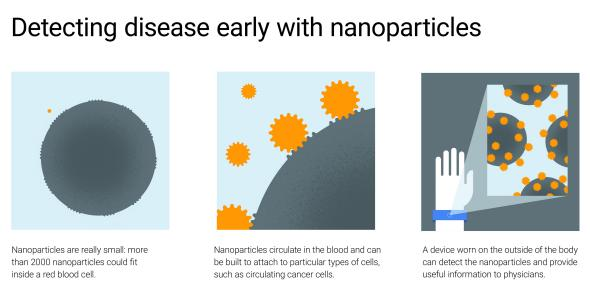
Earlier last week, Google revealed details regarding its most recent biomedical technology project: magnetic nanoparticles capable of providing advanced warning of impending disease. The announcement was made by Andrew Conrad, a member of Google’s special projects division, Google X. Conrad, who heads Google X’s Life Science team, reported that the company is developing nanoparticles capable of monitoring an individual for early signs of impairment, such as cancer, heart attack, and stroke.
Biomolecules circulating within an organism can be likened to a data stream, providing valuable information that can be accessed to identify disease states and processes such as inflammation. Recent studies have focused on developing autonomous devices for this purpose, incorporating biologically derived molecules such as DNA into computing structures capable of analyzing biomolecular input and carrying out logic-gated functions such as cellular analysis and molecule delivery. Magnetic nanoparticles possess inherent properties that make them well suited for such applications.
As improved public health standards increase our average life expectancy, the occurrence of diseases associated with the aging process also becomes more prevalent. Thus, an understanding of the onset and progress of such afflictions becomes essential. A number of studies have revealed that changes in the brain associated with aging-related maladies such as stroke, Parkinson’s disease, sclerosis, and dementias can potentially be reversed through stem cell-based therapies. Obtaining consistent data regarding stem cell survival and distribution, however, has remained challenging. To address this issue, studies have employed superparamagnetic iron oxide nanoparticles (SPIONs) to label stem cells, enhancing in vivo imaging and facilitating stem cell tracking.
Magnetic beads possess many properties that make them well-suited for use in enzyme-linked assays, including a high surface-to-volume ratio, wide range of surface functionalization, and ease of manipulation. Magnetic beads have previously been employed in “lab-on-a-chip” bioassays, where their size lends to increased ease of automation. Their handling in such systems, however, has been sub-optimal, often necessitating complex actuator systems.
To address this issue, a group of researchers in Barcelona, Spain have developed a simple actuator capable of significantly improving the efficiency of magnetic bead-based integrated assays. Employed in tandem with a microfluidic device consisting of reaction and detection chambers, the actuator showed a 2.7-fold enhancement in bioassay sensitivity.
A rotating magnetic actuator
The design of the actuator resembles that of a compact disc, and features a rotating structure with slots for embedded magnets. The arrangement of the magnets is eccentric to the axis of rotation. The aforementioned microfluidic device rests above the actuator, such that rotation causes the magnets to pass under the reaction chamber. The sequential movement of the magnets induces the magnetic beads to move from one extreme of the chamber to the other, in accordance with the position of the magnet. This movement allows the entire surface area of the beads to come in contact with the substrate.
For the initial purposes of development, the actuator was utilized in the second of two steps that comprised an enzyme-linked fluorescence immunoassay. Researchers note, however, that integration of all the steps is the ultimate goal, and will be addressed in the future.
Putting the actuator to the test
To test the actuator, investigators injected an immunocomplex consisting of commercially obtained anti-E. coli O157 magnetic beads, previously incubated with E. coli and phosphatase-labeled anti-E. coli O157:H7 antibody, into a microfluidic chip. 4-Methylumbelliferyl phosphate (4-MUP) was added, and mixing induced by rotation of the actuator. Following the reaction, the immunocomplex was magnetically retained, while the solution containing dephosphorylated 4-MUP (i.e., 4-methylumbelliferone (4-MU)) flowed into the detection chamber for optical fluorescence measurement.
The resulting enhancement was significant. A 2.7-fold increase in sensitivity was seen over control reactions without actuation. The assay’s limit of detection also improved. An LOD of 603 CFU/mL was obtained at optimal actuation speed, in comparison to an LOD of 2,101 CFU/mL without actuation.
The implications for future magnetic bead-based applications and bioassays are promising. The actuator is simple in design, consisting of a compact disc-sized rotating unit and a DC motor, and lends itself to portability. Its circular shape makes it possible to carry out a number of reactions in parallel. What’s more, the magnetic beads utilized in the study were obtained commercially, and a wide range of antibody surface functionalizations are available. Researchers expect that assay sensitivity will be enhanced even further by achieving integration of all of the reactions on-chip.
The safety and effectiveness of employing magnetic nanoparticles in environmental applications has been the subject of a number of recent studies. Subsequent findings have highlighted the advantages of utilizing nanoparticles for protocols such as wastewater treatment and contaminant removal. At the same time, researchers have underlined the need for comprehensive testing in order to minimize the possibility of toxicological effects and ensure biocompatibility.

At a press conference earlier last week in Germany, Merck KGaA announced an agreement to buy Sigma-Aldrich for $17 billion. The transaction has been approved unanimously by the executive boards of both Sigma-Aldrich and Merck KGaA, and is now pending a special vote by Sigma-Aldrich shareholders. The deal is expected to be completed sometime in mid-2015.

More than 8,000 participants are expected to attend theJapanese Association of Clinical Laboratory Systems (JACLaS) Expo taking place on October 9-11, 2014. The event will be held at the Kobe International Exhibition Hall located in Kobe City, Japan. The JACLaS Expo is the largest exhibition of its kind in Japan, granting attendees access to some of the latest developments in diagnostic instruments and reagents.
Cardiovascular disease remains a prevalent problem in the U.S., resulting in death as well as disability. Stem cell therapy has emerged as a promising approach to treating ischemic cardiomyopathy, but its success has been limited by a low rate of stem cell retention and engraftment due to “wash out” of the cells by blood flow and perpetual muscular contraction. To overcome this problem, investigators at North Carolina State University attached stem cells to magnetic nanoparticles and utilized magnetic targeting to increase the efficiency of cell retention in the heart.
Gene therapy has shown promise in a number of cancer treatment studies. However, certain drawbacks such as uncontrolled gene delivery and random gene integration have limited its potential use in the clinical setting. By utilizing magnetic nanoparticles as vehicles for genetic delivery, researchers in China have succeeded in overcoming several obstacles associated with gene therapy and increased the efficacy of treatment for hepatic cellular carcinoma (HCC).
Oxidative stress has been reported to be a significant aspect in the development of several pathologies, including atherosclerosis and diabetes mellitus. In addition to being the byproduct of a number of oxidases found in biological systems, hydrogen peroxide can be utilized as an effective indicator of oxidative stress. As such, several methods have been developed to detect its presence.
Immunotherapy requires the manufacture and expansion of an activated T cell population. Adoptive cell transfer therapy is a promising method, utilizing a patient’s own cells and expanding them in vitro before re-introduction. Activation of T cells requires antigen presenting cells such as dendritic cells, which are capable of interacting with and stimulating the T cells. Obtaining these cells can be costly and time-consuming. As such, researchers at Yale University have come up with a way to present antigen fragments to T cells using a combination of carbon nanotubes and magnetic nanoparticles.
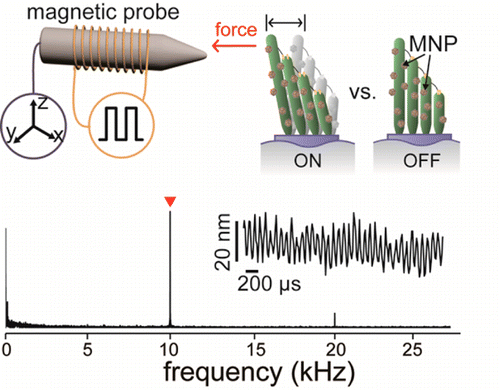
Researchers have developed a way to utilize magnetic nanoparticles to study and potentially treat hearing loss. Unlike traditional methods employing glass pipettes or similar probes, the nanoparticles developed as part of the most recent study do not impose a mechanical load on cells. Additionally, the particles greatly enhance temporal and mechanical resolution, and address a number of issues associated with studying mechanotransduction in a biological system.
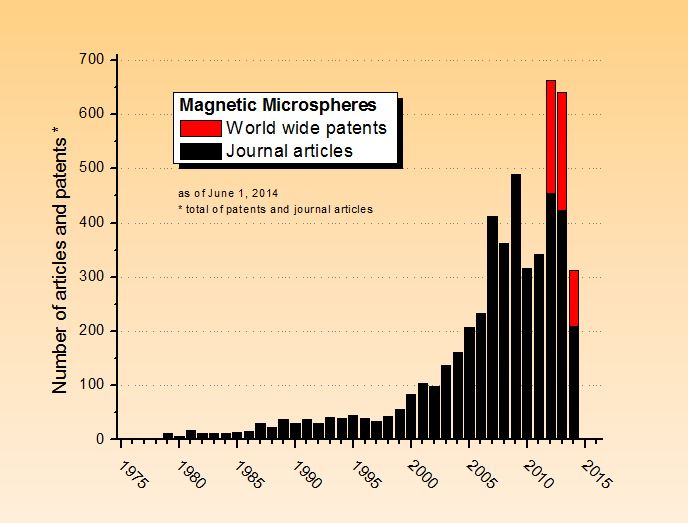
Nanotechnology is an emerging field that has grown significantly in the recent past. The last decade has seen a proliferation of research in the nanoscience arena. According to a SciFinder search carried out in 2014 by magneticmicrosphere.com, the number of articles dealing with nanoparticles nearly doubled in 1999, then doubled again eight years later. In China, the number of articles relating to nanoscience and nanotechnology in 2010 exceeded those relating to broader subjects such as materials science, engineering, and physics [1]. This is indicative of the increased funding being directed toward projects related to nanoparticles and/or microspheres.

In a recent study published in “Angewandte Chemie,” researchers report the development of iron oxide nanoparticles capable of self-assembling when placed in a tumor environment. Self-assembly into larger aggregates significantly improved magnetic resonance imaging (MRI) of cancer cells. The research, carried out by a team of scientists at the Imperial College London, has significant implications for the early detection and treatment of cancer.
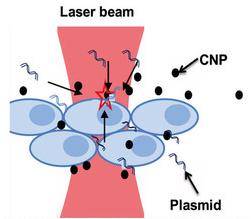
A team of physicists at the University of Texas (UT) recently reported success coupling continuous wave near-infrared laser beams with crystalline magnetic carbon nanoparticles to introduce therapeutic agents into cancer cells. The study, which appears in “Nature Scientific Reports,” introduces an alternate and viable approach to cell targeting and drug delivery methods.
The principle behind quadrapeutics involves four existing clinical treatments: radiotherapy, low-energy laser pulses, targeted drug delivery, and colloidal gold nanoparticles. The protocol was developed to treat chemoradiation-resistant tumors. Preclinical studies, led by Dmitri Lapotko at Rice University in Texas, recently showed a 17-fold improvement in treating aggressive, drug-resistant cancer in vivo. What’s more, the procedure specifically targeted cancer cells, leaving healthy cells unharmed.

The American Association for Clinical Chemistry (AACC) will be holding its annual meeting this year on July 27 – July 31. The meeting will take place at McCormick Place, located on Lake Michigan in Chicago, Illinois. Over 20,000 laboratory medicine professionals are expected to attend, taking part in the main conference as well as the Clinical Lab Expo. Participants will include scientists and clinicians interested in the fields of clinical chemistry and the clinical laboratory sciences.
In order to efficiently utilize nanoparticles in imaging and diagnostic applications, it is critical to distinguish particles that have been internalized by their cellular target from those that have not. The ability to differentiate between the two is essential for quantification and visualization, as well as determining the efficiency of drug delivery protocols.
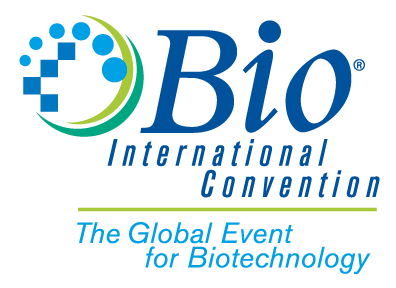
The Biotechnology Industry Organization (BIO) will host its annual convention on June 23-36 in San Diego, California this year. The BIO International Convention is the largest biotechnology event of its kind, drawing thousands of attendees. Participants will be able to choose from hundreds of sessions regarding trends in biotechnology, policy, and innovations, as well as being granted access to the world’s largest biotechnology exhibition.

Last May I was in Shanghai, invited by Merck Millipore to contribute to the Forum they organized. SEPMAG was one of the sponsors and I was one of the speakers. In a previous post I have reviewed the talks about new trends on immunomagnetic assays, coupling of biomarkers and the use of Biomagnetic Separation in CLIA IVD-kits Manufacture.
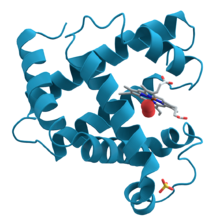
When a nanoparticle is introduced into a physical medium such as human plasma, its surface becomes coated by a layer of proteins, yielding a protein corona whose composition greatly influences the way the nanoparticle interacts with tissues and cells, as well as its ultimate biological fate. Different factors, including protein concentration, post-translational modifications, structure, and solubility, all play a role in determining the corona’s make-up. Any circumstance that impacts these factors, such as disease or genetic background, is therefore also likely to impact the composition of the protein corona.
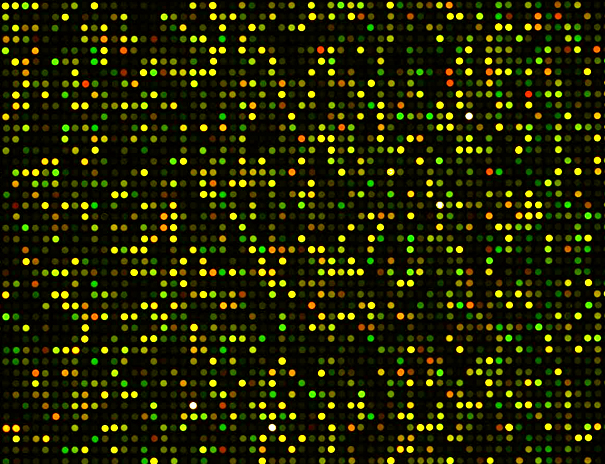
Two draft maps of the human proteome have been published in the latest issue of Nature. The drafts were produced by two separate international research teams working independently of one another. Using mass-spectrometry to analyze tissue, body fluids, and cells, the teams have catalogued the proteins that are found in a non-diseased state and identified novel proteins expressed from what was previously thought to be non-coding or junk DNA.
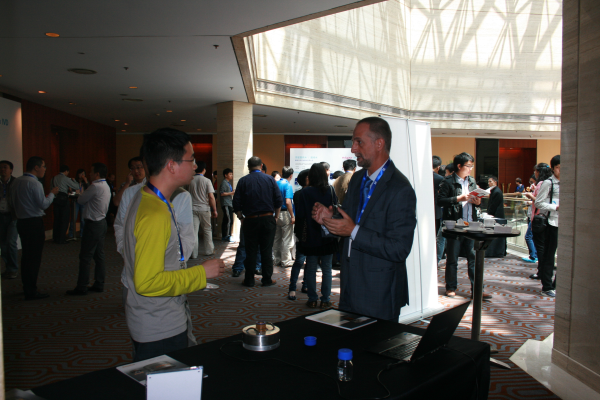
A few days ago I was invited by Merck Millipore to contribute to the Forum they organized in Shanghai. Besides being one of the speakers –more details below-, SEPMAG has also been involved as sponsor. We believed the direct contact with IVD-magnetic beads users in China, as well as with the technical worldwide contributors, is the only way to still push forward this technology.
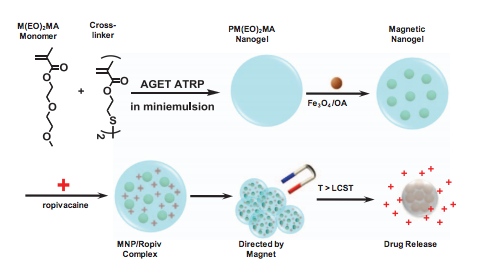
Devising a safe and efficient protocol for using magnetic nanoparticles to target drug delivery is an ongoing challenge whose study has yielded promising results. While the majority of these studies have been focused on delivering cytotoxic drugs to cancer cells, there is a range of possible applications for which targeted delivery could prove invaluable.
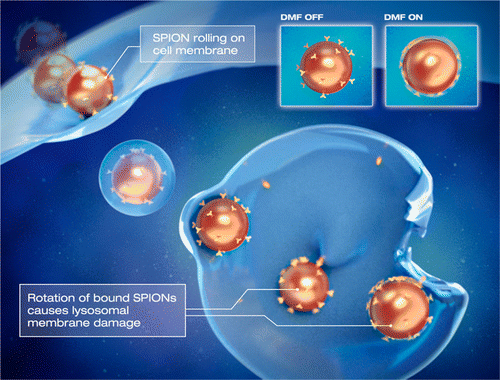
The necessity of finding a safer and more efficient way to treat cancer has led investigators to naturally turn their attention toward nanoparticles. Recently, a group of researchers in Sweden has come up with a novel system of utilizing magnetic particles to trigger apoptosis, thus resulting in the self-destruction of tumor cells. The findings, published in the journal ACS Nano, signify a promising approach to cancer treatment, with implications extending beyond oncology and encompassing a range of clinical applications.
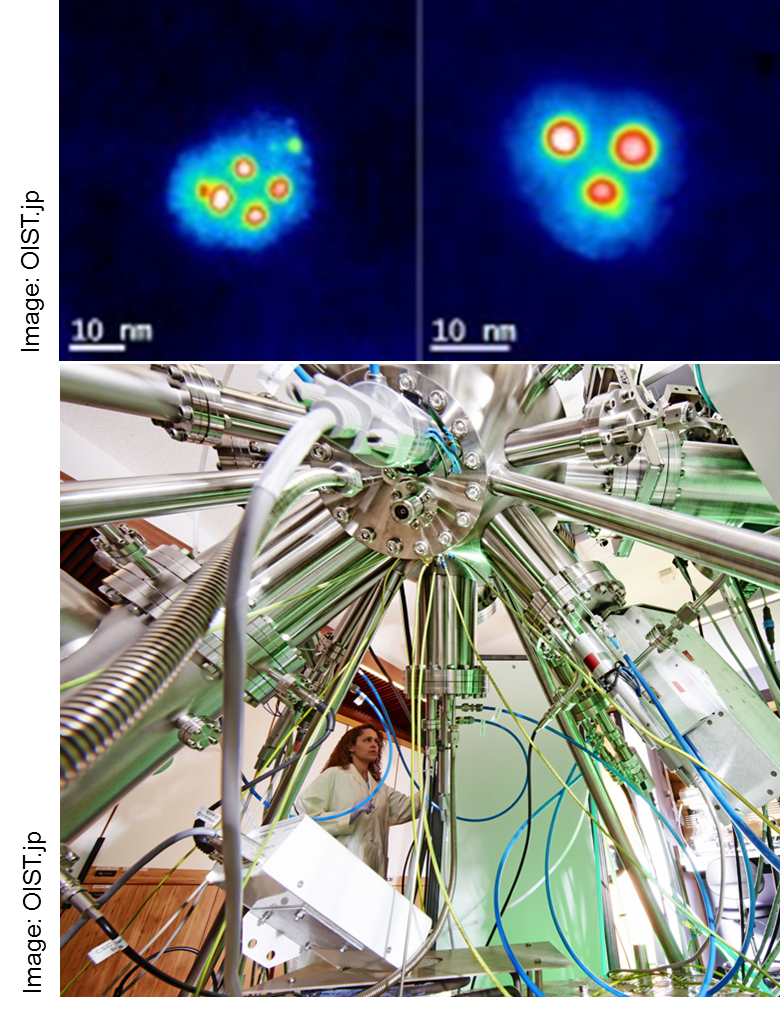
Investigators at the Okinawa Institute of Science and Technology (OIST) in Japan have developed a protocol for manufacturing biocompatible hybrid nanoparticles. The resulting particles have magnetic as well as optical properties. They are suitable for clinical use and can be customized for utilization in a wide range of applications.
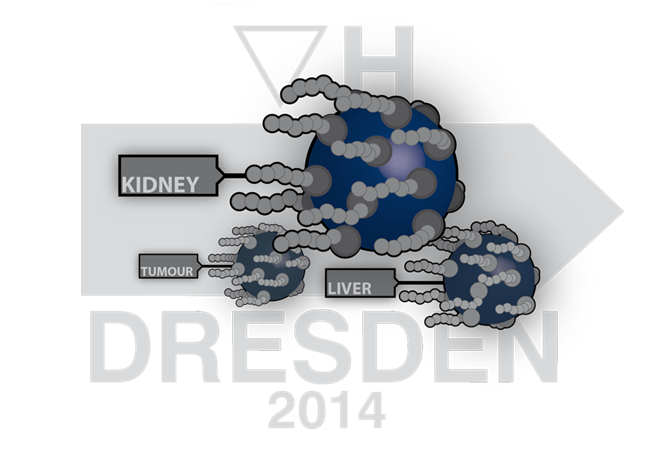
Approximately 400 participants will gather in Dresden, Germany, for the 10th International Conference on the Scientific and Clinical Applications of Magnetic Carriers, to be held on June 10, 2014. The conference, hosted by the Faculty of Mechanical Science and Engineering at the Technical University of Dresden, will run for five days and cover a range of topics related to magnetic carrier technology.

Next week, 18,000 scientists and other cancer professionals from around the world are projected to move to 2014 AACR Annual Meeting, in San Diego. Attendees are laboratory scientists and clinical investigators specializing in all aspects of cancer research, including experimental therapeutics, molecular targeted therapies, chemistry, molecular biology and genetics, immunology and immunotherapy, tumor biology, virology, toxicology, prevention, and clinical and translational research.

Merck Millipore has invited experts from around the globe to attend the symposium it has organised at the Hilton Hotel in Shanghai on May 15 and 16. The event will include contributors from China, as well as Germany, New Zealand, Russia, Spain and USA.
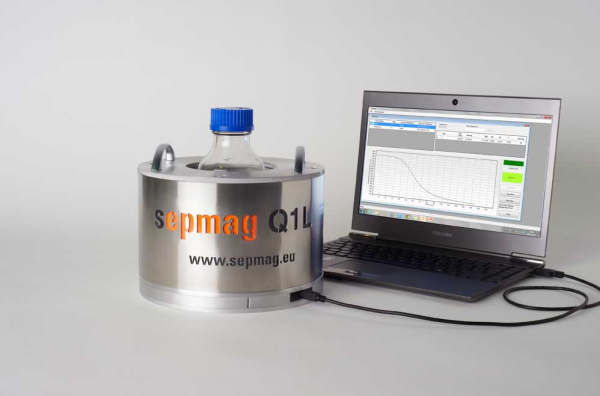
The traditional way to check whether a biomagnetic separation process is complete is by sight. The technician/researcher looks at the suspension: at the beginning of the process, the suspension is homogenous and opaque, but when the separation process is complete, the magnetic beads are left on the walls of the vessel and the supernatant is transparent. When the suspension is ‘transparent’, the technician stops the process by extracting the supernatant, leaving the magnetic beads in the bottle.
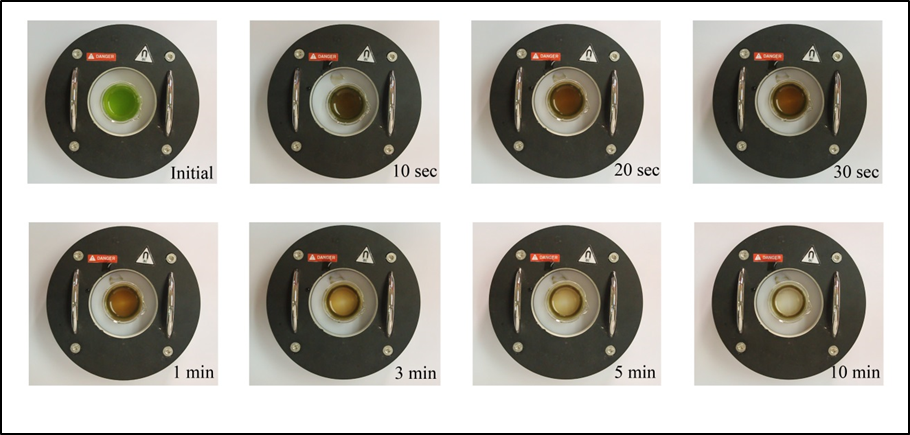
Microalgae become the exclusive focus in research of biofuel production to meet global energy demand. Photosynthetic microalgae use the sunlight to form biomass from the supplement of carbon dioxide and water. One of the main constituents of microalgal biomass is the natural oil stored within the cells. This natural oil can be further transformed into biodiesel through a transesterification process. The biofuel is renewable with huge potential to replace the fossil fuel. The International Energy Agency has reported that the total final oil consumption of the world in 2010 has reached 3575 Mtoe.1
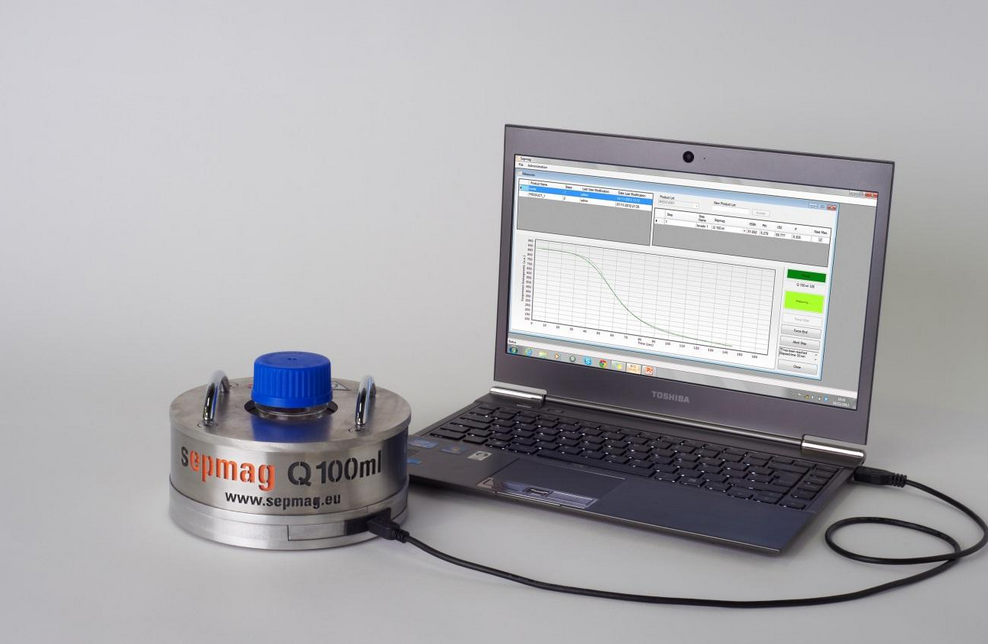
When new magnetic beads reach the market, one of the questions users have is, how well will it separate?

The most frequent concern when considering the use of modern Biomagnetic Separation Systems is their compatibility with specific magnetic beads. Although Sepmag® devices are already working successfully in IVD labs and production lines, this is a very legitimate question.

On 10, 11 and 12 of October, the Japanese Association of Clinical Laboratory Systems will hold its EXPO2013 at the Pacifico Yokohama Convention Center.

At the end of the month (July 28-August 1) Houston will host the AACC 2013 Annual Meeting, which includes the Clinical Lab Expo. The organizers claim that Clinical Lab Expo is the largest in the World. I am not in a position to endorse or refute this claim, but even if it is true, it is irrelevant from the perspective of the magnetic beads supply chain.
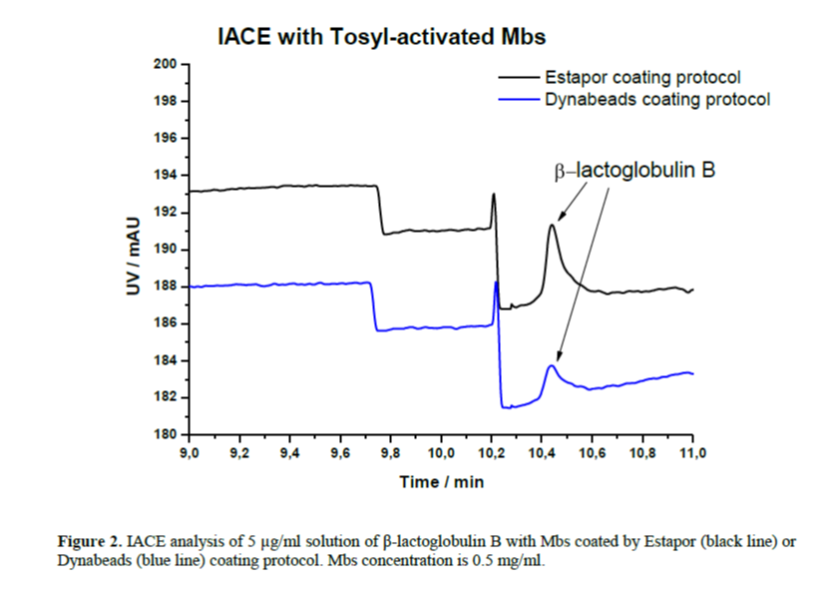
Estapor R01-24 vs Dynabeads®MyOne™Tosylactivated
The researchers Natalia Gasilova and Hubert H. Girault, from the Ecole Polytechnique Fédérale de Lausanne, have released a report where they compare two magnetic bead coating protocols for immunoaffinity capillary eletrophoresis.
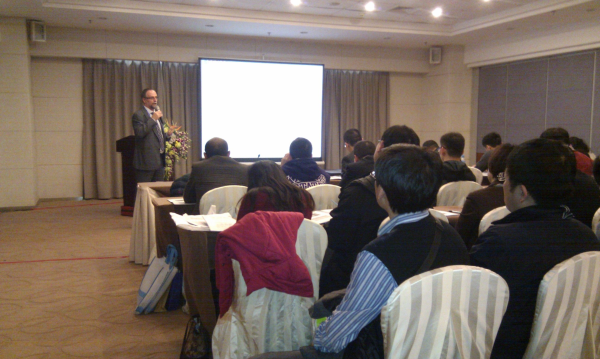
By Lluis M. Martinez, CSO Sepmag
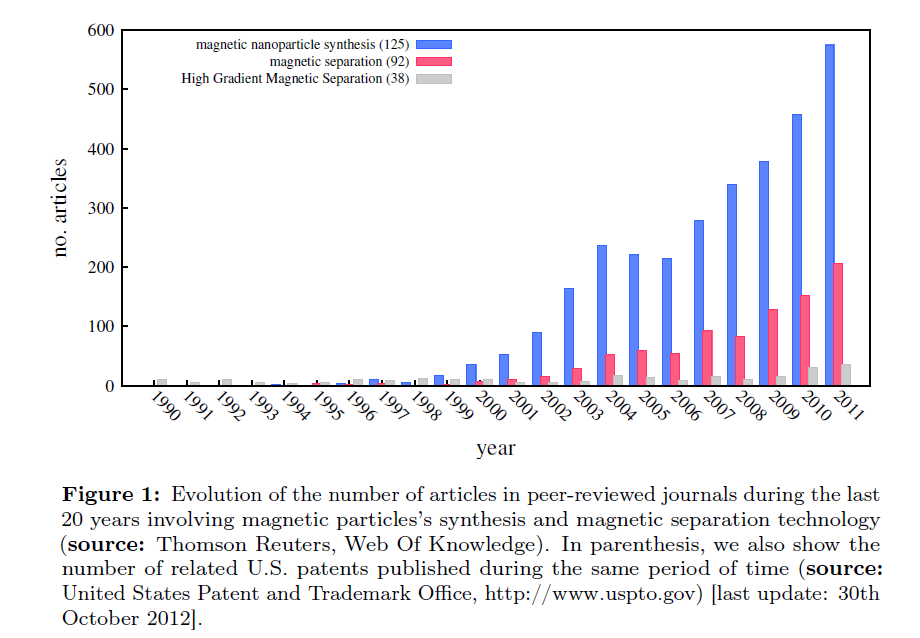
Last March 4th, Mr. Jordi Andreu Segura defended his paper “Statistical Mechanics of Superparamagnetic Colloidal Dispersions Under Magnetic Fields”, which was submitted to obtain a PhD degree in Materials Science at the Universidad Autónoma de Barcelona.
The 10th Clinical Laboratory Provider and Blood Transfusion Equipment Expo (CACLP), will be held in the Xi’an Greenland Pico International Convention & Exhibition Center next march. This Trade Show will attract to the city of the Terra Cotta Warriors main Chinese companies as well as major foreign players with interests in the In Vitro Diagnostic sector.
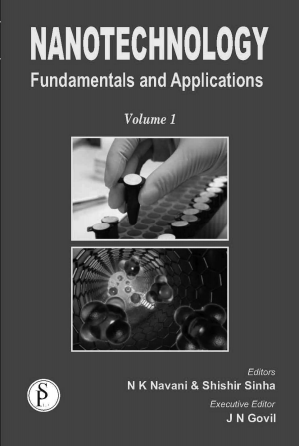
A Tool for Synthesis Monitoring and Biomagnetic Applications

SEPMAG will be attending MEDICA on November 14, 15 and 16 in Düsseldorf, Germany. If you are attending too, we will be delighted to meet you and discuss how our proprietary technology may help your company to implement a state of the art biomagnetic separation process.
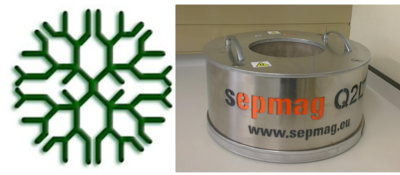
Sepmag installs a 2L system of its unique biomagnetic separation technology at Resyn Biosciences head laboratory in Pretoria, South Africa, allowing this innovative magnetic bead manufacturer to enhance the reproducibility of production batches, reduce material waste, facilitate the validation process and increase the safety of operation. You can follow it on ResynBio’s twitter and facebook.

EMD Millipore, the manufacturer of ESTAPOR magnetic beads, organizes the Technical Seminar "The Use of MicroSpheres and NanoSpheres in Diagnostics and Life Sciences: Technologies & Applications" in Paris, next September 27th and 28th. The two days have been divided in 3 sessions to allocate 17 technical talks.
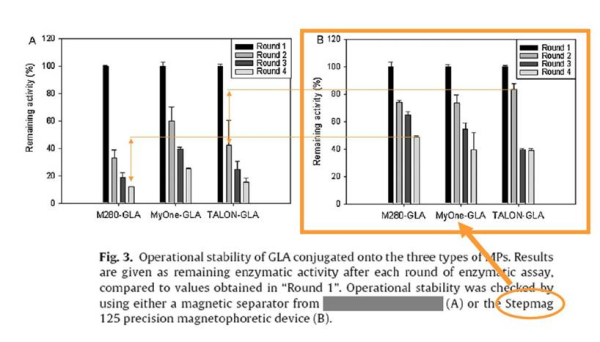
Researchers of the CIBER-BBN, the Institut de Biotecnologia i de Biomedicina and the Department of Genetics and Microbiology of the Universitat Autònoma de Barcelona and Sepmag have recently published the paper “Enzymatic characterization of highly stable human alpha-galactosidase A displayed on magnetic particles” on the Biochemical Engineering Journal.
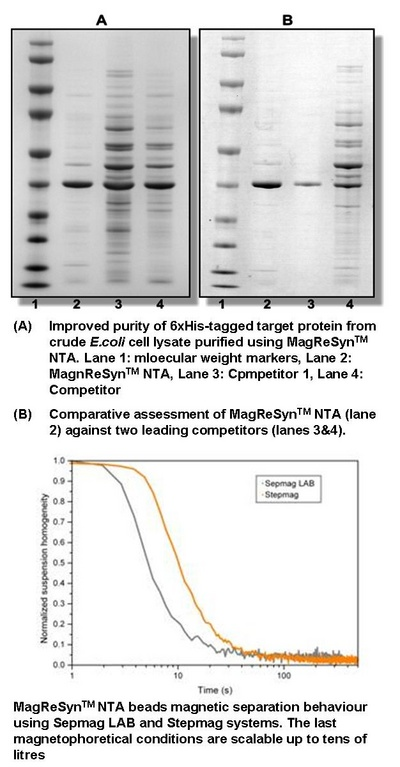
Traditional magnetic beads are comprised of solid microspheres. Unfortunately, binding capacity is limited by the amount of area on the surface of these magnetic beads.
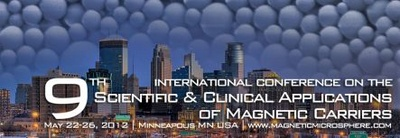
As in every edition since 2008, SEPMAG will be one of the sponsors of the 9th International Conference on the Scientific and Clinical Applications of Magnetic Carriers (http://www.magneticmicrosphere.com) that will be held in Minneapolis, MN, USA from May 22-26, 2012.
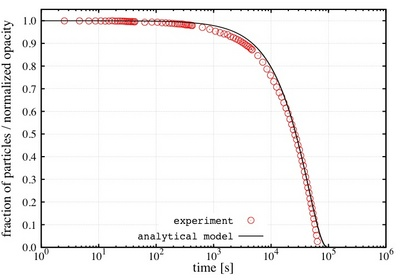
Latest theoretical investigations conducted by researchers from the Institut de Ciencia de Materials de Barcelona and the Grup de Fisica Estadistica de la Universitat Autonoma de Barcelona have shed some light on the key aspects of the magnetophoretic separation process.
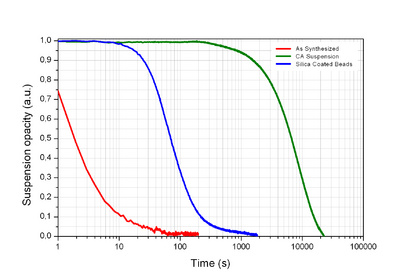
Researchers at Centro de Fisica of the Universidade do Minho (Braga, Portugal) have used Sepmag LAB precision magnetophoresis equipment to characterize the behaviour of magnetic nanoparticle suspensions throughout their synthesis process.

